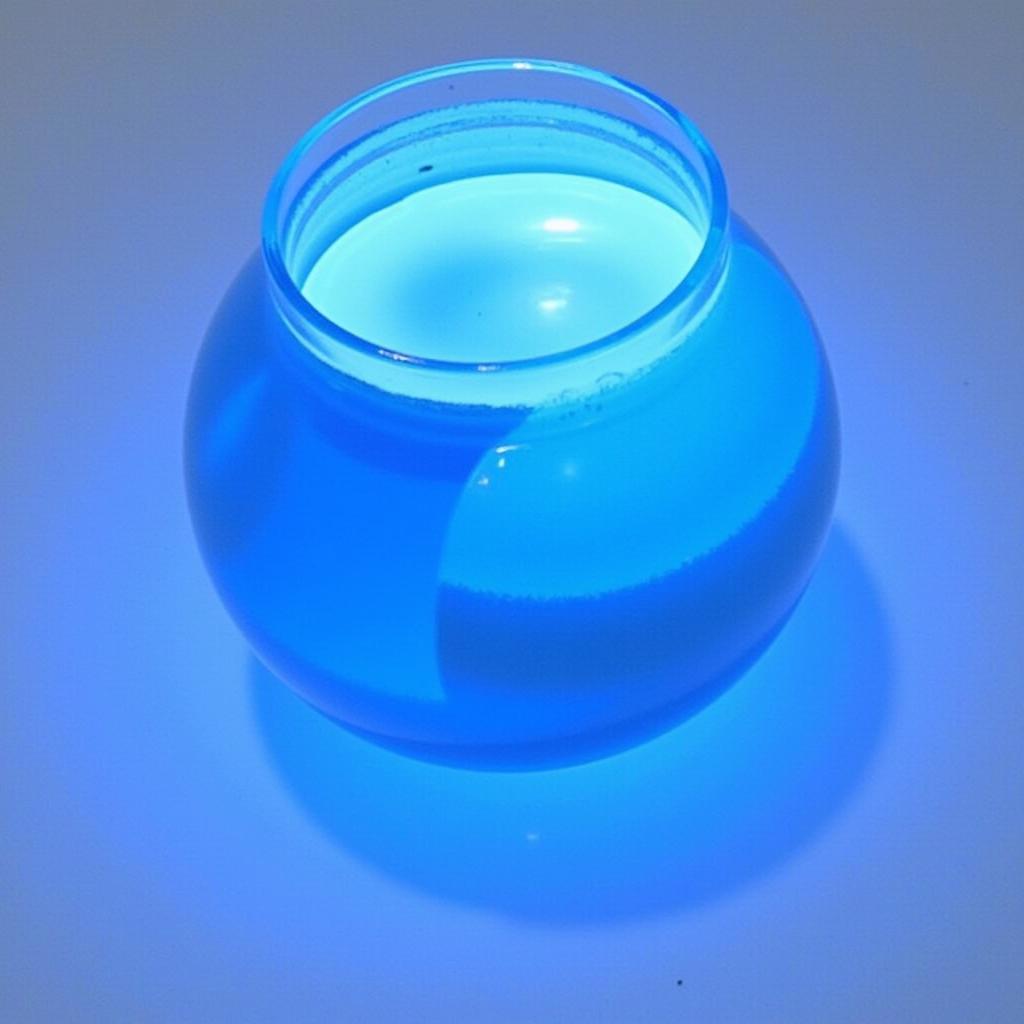The question “is the color blue a physical or chemical property?” delves into the fascinating intersection of physics and chemistry. Understanding the nature of color, specifically blue, requires us to explore how we perceive it and how it originates at the atomic and molecular level.
Decoding the Nature of Blue: Physical or Chemical?
Color, in general, is perceived due to the interaction of light with matter. When light hits an object, certain wavelengths are absorbed while others are reflected. The reflected wavelengths are what our eyes detect and interpret as color. Blue, therefore, is the result of an object absorbing all wavelengths of visible light except those in the blue spectrum, which are reflected back. This process of absorption and reflection is primarily a physical interaction, meaning it doesn’t alter the fundamental chemical composition of the object. Therefore, the color blue itself is considered a physical property.
 Blue Pigment Reflecting Light
Blue Pigment Reflecting Light
Is Color a Chemical or Physical Property? Delving Deeper
However, the underlying reason why a substance absorbs and reflects specific wavelengths, leading to the perception of blue or any other color, is often rooted in its chemical structure. The arrangement of atoms and the types of chemical bonds present within a molecule dictate how it interacts with light. For instance, the vibrant blue of a copper sulfate solution is a direct consequence of the chemical interactions between copper ions and water molecules. This interaction causes the solution to preferentially absorb wavelengths outside the blue spectrum.
Similarly, is blue color a physical or chemical property can be explored in the context of pigments. The chemical composition of a blue pigment, such as ultramarine, determines its characteristic light absorption properties. The specific arrangement of sulfur and sodium atoms within the ultramarine crystal lattice allows it to selectively reflect blue light. Thus, while the perception of blue is a physical phenomenon, the origin of that color is linked to chemical composition.
How Chemical Changes Affect Color
Changes in chemical composition often lead to changes in color. Consider the rusting of iron. The initial silvery-grey of iron transforms into a reddish-brown as it reacts with oxygen to form iron oxide. This change in color is a direct manifestation of a chemical change. This connects to why does the indicator change color in titration, where the color change signifies a shift in chemical composition, indicating the endpoint of a chemical reaction.
Likewise, is color a physical or chemical property can be investigated through observing chemical reactions involving color change. For example, burning a piece of paper results in a black residue, indicating a chemical change and a corresponding color alteration.
Understanding the Nuances of Color Perception
As discussed, is blue color a chemical or physical property is a nuanced question. While the observation of color itself is a physical phenomenon related to light reflection, the ability of a substance to reflect a particular color like blue is often dictated by its underlying chemical structure.
Conclusion
In summary, the color blue, like other colors, is a physical property observable due to the reflection of specific wavelengths of light. However, the underlying mechanisms that govern which wavelengths are absorbed and reflected are intrinsically linked to the chemical composition and structure of the material. Understanding this interplay between physical observation and chemical basis is crucial to fully grasping the nature of color.
FAQ
-
What makes an object appear blue? An object appears blue because it absorbs all wavelengths of visible light except blue, which are reflected back to our eyes.
-
How does the chemical structure affect color? The arrangement of atoms and chemical bonds determine how a substance interacts with light, influencing its color.
-
Why does rusting change the color of iron? Rusting is a chemical change where iron reacts with oxygen, forming iron oxide, which has a reddish-brown color.
-
Is color change always indicative of a chemical change? While color change often suggests a chemical change, it can also be due to physical changes like changes in state or lighting.
-
Can physical properties be used to identify substances? Yes, physical properties like color, density, and melting point can help identify substances.
-
What is a pigment? A pigment is a substance that absorbs certain wavelengths of light and reflects others, giving it a specific color.
-
How are chemical properties different from physical properties? Chemical properties describe how a substance reacts with other substances, while physical properties describe characteristics that can be observed without changing the substance’s composition.
Need assistance with your color choices or home painting projects? Contact us at 0373298888, email us at [email protected], or visit us at 86 Cầu Giấy, Hà Nội. Our 24/7 customer service team is ready to help.
